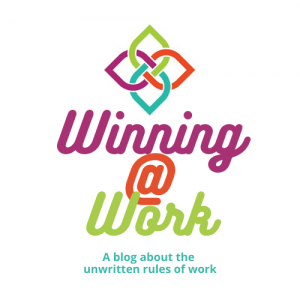
It’s easier than ever to search for a job today, but sadly it's probably harder to GET a job than it was 20 years ago. There are a plethora of online job boards like Indeed, LinkedIn, The Ladders, Zip Recruiter and more. With little effort on your part you can opt to receive an inbox full of job alerts each day.
Some of the openings even allow you to apply with “one click” -- automatically submitting your stored to the employer. Despite the ease of online applications, the depressing reality is that fewer than 20% of jobs will be filled by a candidate who applied online. And to be clear, that doesn’t mean that you have a 20% chance of being hired. It means that four out of five people who are hired for positions did not apply through the job boards.
All of the applicants vying for the 20% of jobs that will be filled with online candidates have very steep competition. It’s salmon swimming upstream. That leaves only an extremely small chance YOU will be the one getting the offer if this is the only avenue you’re using for job search. If that’s not discouraging enough, companies use artificial intelligence to help sort through the deluge of resumes that are so easily submitted through online channels. These system have algorithms built in to help the companies identify which candidates best fit the role based on key words matches and other criteria.
If your resume includes a high number of key words, you may be among the lucky few to be reviewed by a junior HR employee who will spend 15 seconds on average reviewing it before deciding whether your resume goes in the NO or MAYBE pile. The MAYBE pile is then typically reviewed by a more senior HR professional who may spend 30 seconds reviewing each resume before sorting into YES and NO piles.
The applications in the YES piles are finally forwarded to the hiring manager for review and decisions on whom to screen via phone to decide who gets invited in to interview. There are better ways to look for a job, but for the purposes of this article and those who want to try the job boards, here are some tips that may help increase your "batting average":
- Customize , customize, customize. Use a highlighter on the key words and phrases in the job description and, provided you have that experience, use the words verbatim in your resume to describe your background. The artificial intelligence of the applicant tracking systems will not recognize synonyms and the human HR screener may not either, especially if you work in a technical field with specialized lingo.
- Start your experience at the top. Many applicants put "objective" and "professional summary" sections at the top of their resumes. With less than 15 seconds to make an impression, you want the screener to see your good, meaty experience above the fold. Your experience are the facts and your summary is the "spin". Just start with the facts... you can include a "skills summary" section at the end of the resume if you'd like to include a list of skills.
- Use dates of graduation. Many older job seekers omit graduation dates in the hope of avoiding age discrimination. Guess what? It doesn’t work. Resumes that cause uncertainty go in the NO pile. Even if you get the interview, they’ll figure out the resume isn’t complete if your resume gives the impression that you’re 30, then you show up for the interview and you’re 55. The interviewer may feel duped which isn’t a good way to begin the relationship if you want to eventually get an offer.
- List your jobs going back to graduation. You don’t need to provide details on jobs from 20 years ago unless it’s directly relevant to the job you’ve applied to. Here’s a scenario of what happens when you omit jobs: You get the interview and mention a job from years ago that’s not on your resume. It causes confusion as the interviewer searches for it on your resume. Confusion means distrust and distrust doesn’t get you the offer.
- Keep the cover letter simple. If you have only 15 seconds to make an impression, don’t waste it on the cover letter. Just state the role you’re applying for and refer them to the resume. Many applicant tracking systems (ATS) don’t forward the cover letter anyway.
- Tout your results. For each bullet try to provide tangible results that include metrics such as ROI, new revenue, savings, head count reduction, increases in efficiency, etc. It’s all about the money, even if you're not in a revenue-producing role. The more you can tie to positive monetary results, the better.
- Avoid turning your resume into a job description. Make sure each bullet has a result. Hiring managers don’t care what you were supposed to do. They want to know that whatever they are paying you will be worth the investment in terms of the problems you solve for them. Demonstrate you understand that by tying responsibilities to results.
- Submit your resume in Microsoft Word rather than PDF format. Word is more easily read by the ATS system. In addition, sometimes PDFs are reverse-converted to MS Word and the formatting can look horrendous. It won’t make a good impression if your resume looks like a formatting disaster.
I hope these tips will help your resume to be the needle that’s actually pulled out of the haystack overflowing with applications. And if not, contact me and we can do a deep dive to see where you may be hitting blocks in your job search. There are much more effective job search strategies that can yield faster and more satisfying results. If you'd like to explore what that looks like, set up a free session with me at https://terrybmcdougall.as.me/explore

